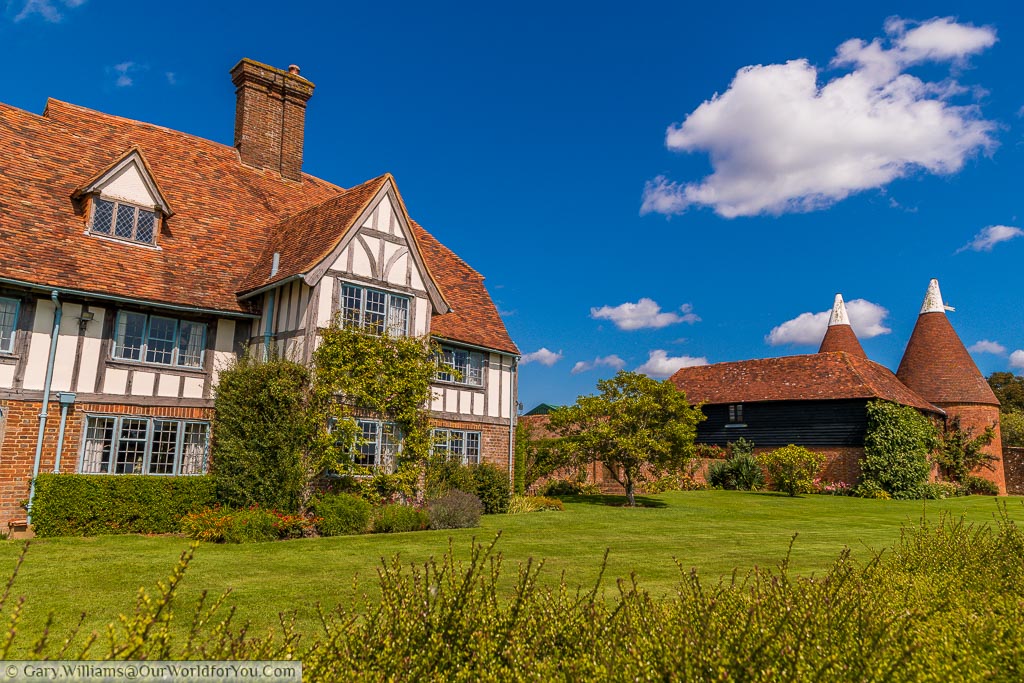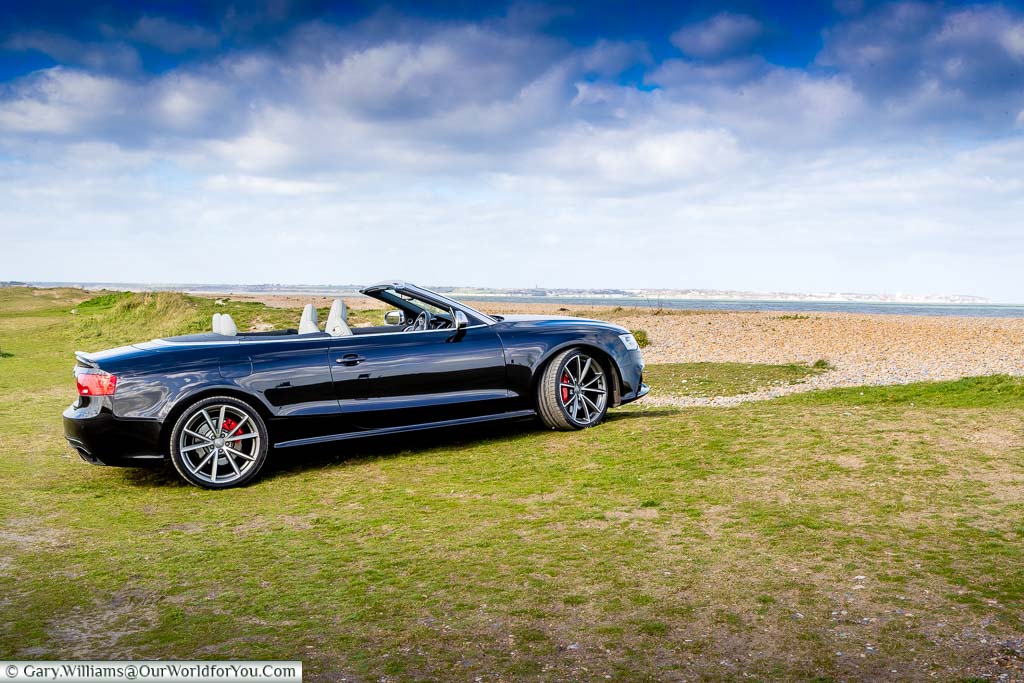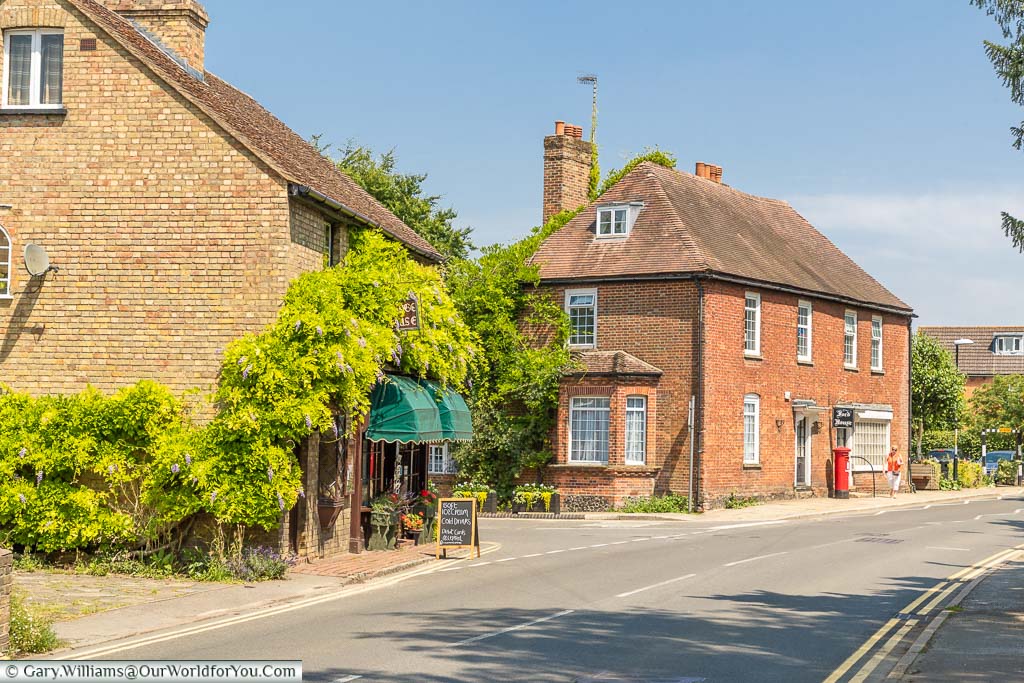Romney’s ‘Listening Ears’
Just when I thought Romney’s extraordinary and diverse landscape in Kent couldn’t become any more bizarre, we then explored the three acoustic sound mirrors on a remote island at Greatstone Lakes.
The enormous listening ears are located in the extraordinary region of Romney Marsh, which is often referred to as ‘The Fifth Continent’. Due to its sparse wetlands, remote churches, grazing sheep, and miles of meandering waterways.
The sound mirrors are nestled between the pebbly Kent shores of Greatstone on the coastline of the English Channel and the tiny airport at Lydd. You can admire the sound mirrors at a distance from a footpath opposite the island; however, it’s much more fun observing the magnitude of these concrete structures face-to-face. They are magnificent to see.
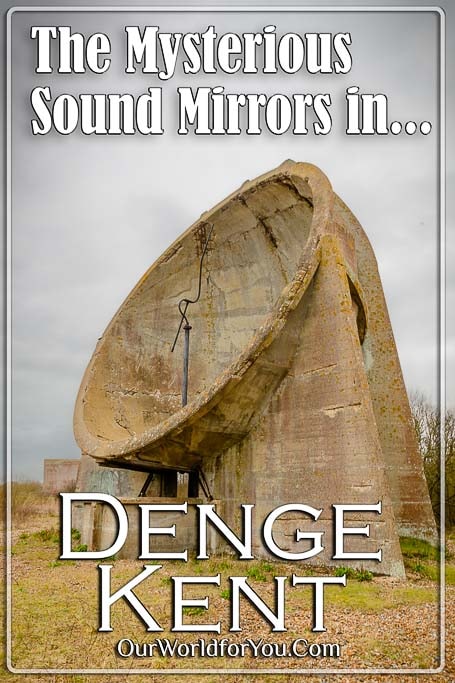
Where are the Sound Mirrors?
A little history behind the sound detectors
Listening out for the enemy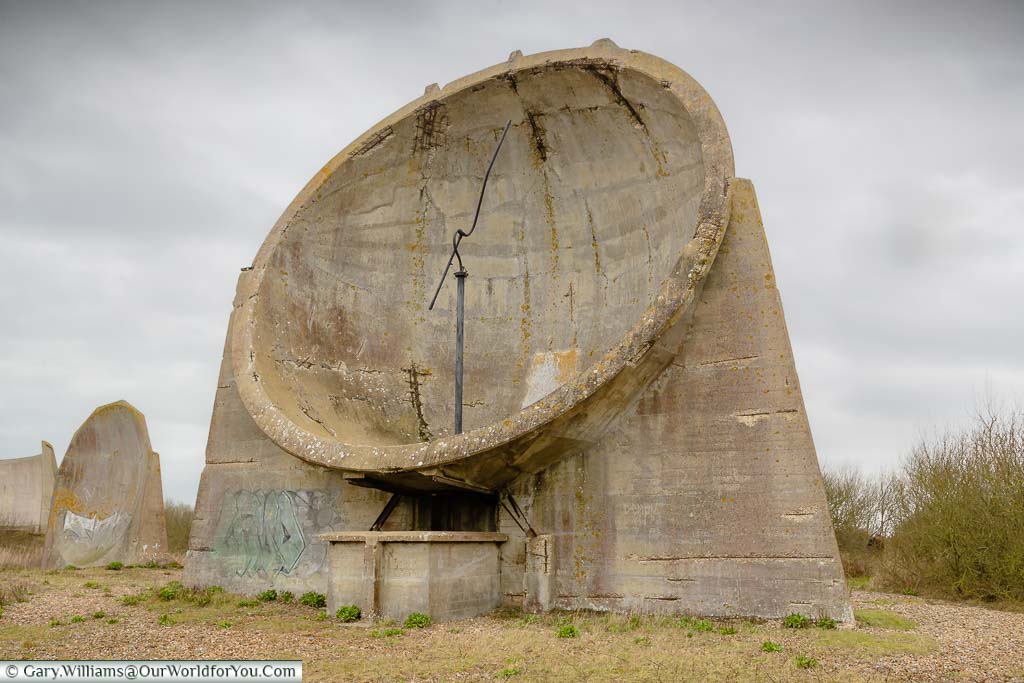
The second was ‘listening discs’, located horizontally above ground. The microphones were placed at the centre of the disc. Due to Romney Marsh’s low-lying landscape, a series of discs were installed in 1924.
During this time, experiments were also taking place with sound detectors shaped like trumpets and mirrors. This led to the first Greatstone sound mirrors being installed on the island within Greatstone Lakes.
Sound Mirrors at Denge
First arriving in 1928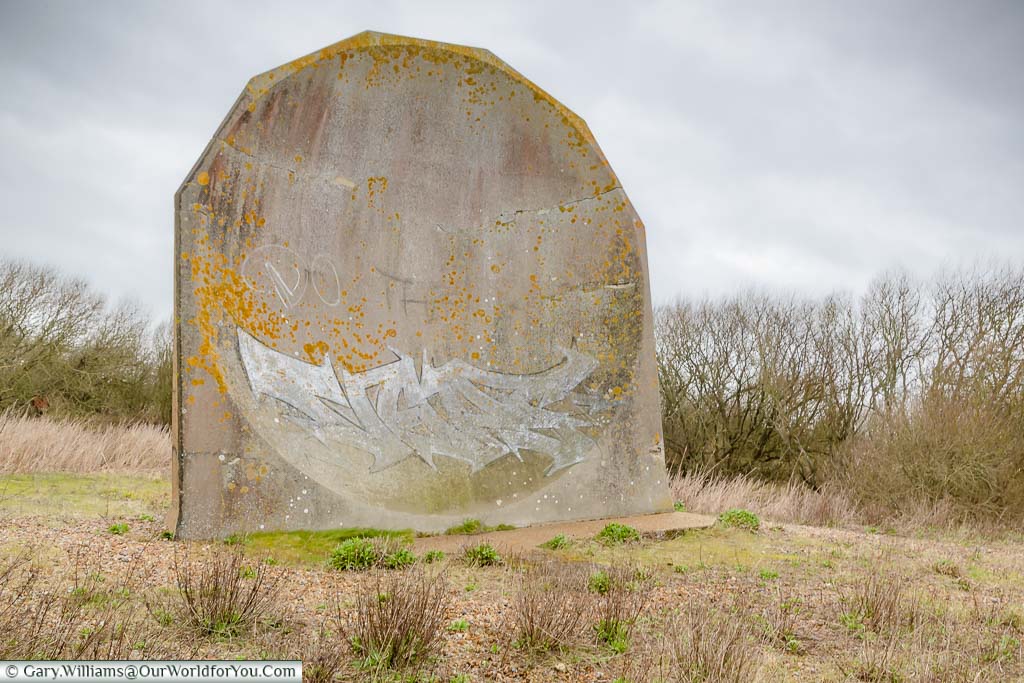
The first concrete’ big ear’ to be constructed at Greatstone was in 1928. A sister sound mirror was built at the same time at Abbots Cliff just outside Dover by Capel-le-Ferne. Nearby the Abbots Cliff sound mirror, you’ll find the Battle of Britain Memorial, which is an incredible place to visit.
This preliminary curved acoustic mirror was 20 feet (6 metres) in diameter and was formed from one huge piece of concrete. It looked so elementary; however, the results emanating from the ‘ears’ were proving fundamental.
The listening mirrors worked by absorbing sound waves towards the curved central point. A microphone was located in the centre and would have detected the noise emitting from an enemy aircraft. Resulting in hearing the engine of the aeroplane before seeing it.
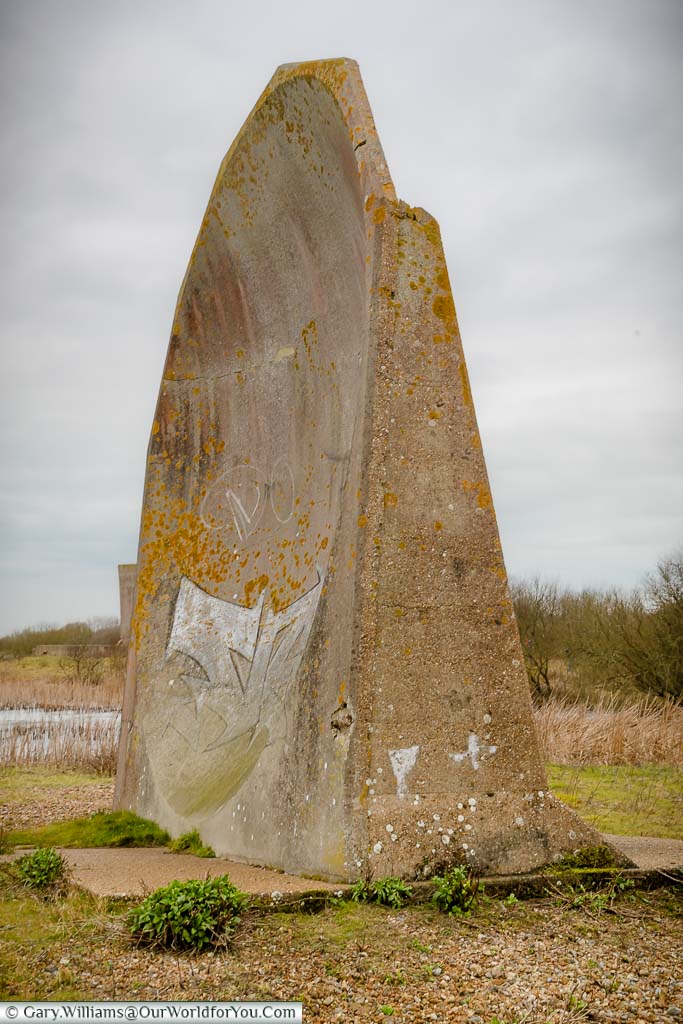
Where to stay nearby the Sound Mirrors
The Acoustic Mirrors kept growing
From 30ft diameter to 200 ft in length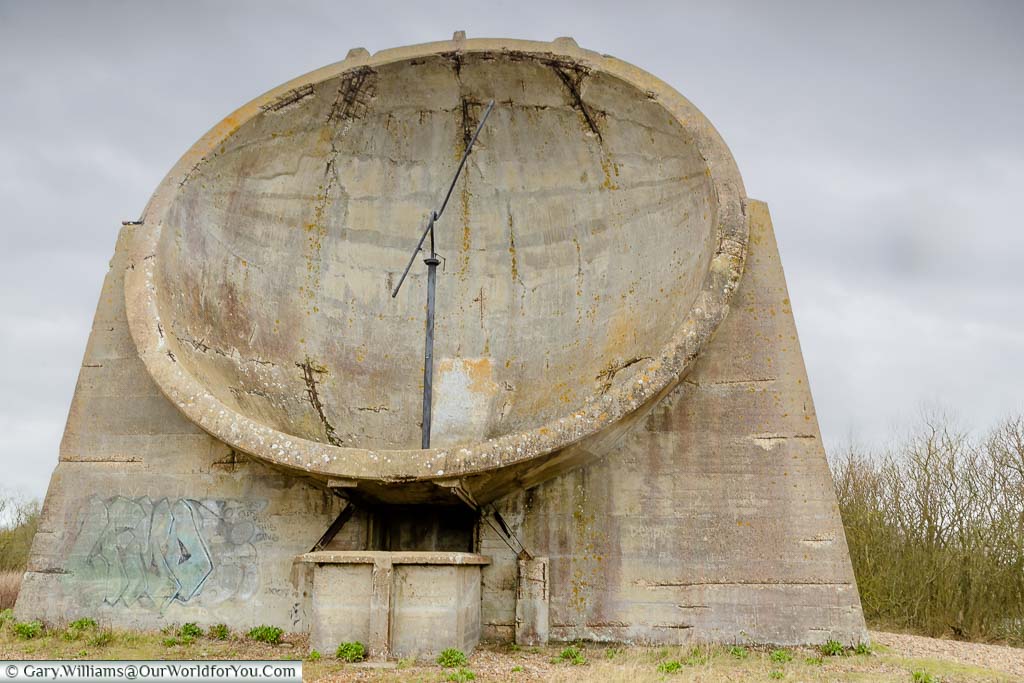
This ‘ear’ is a lot chunkier in comparison and provided greater accuracy in detecting the oncoming aircraft for the operators.
Later in the same year the third and most commanding listening mirror was erected. The 200 feet (60 metre) near vertical mirror is astounding and has such presence, standing at 26 feet tall. Just like the other two sound mirrors, it was precast by using a single piece of concrete.
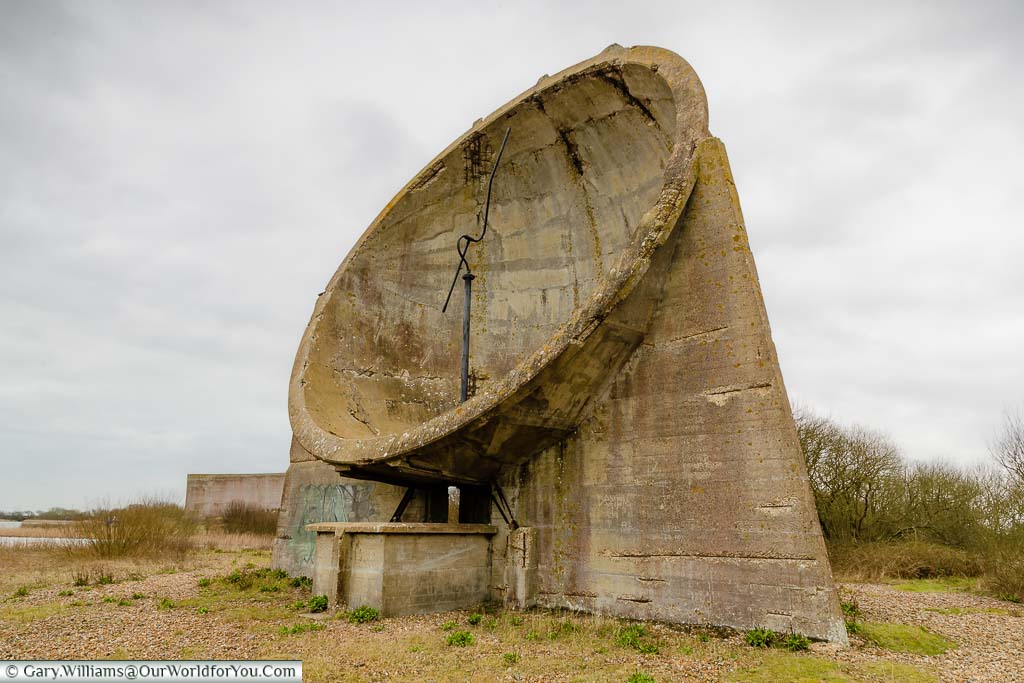
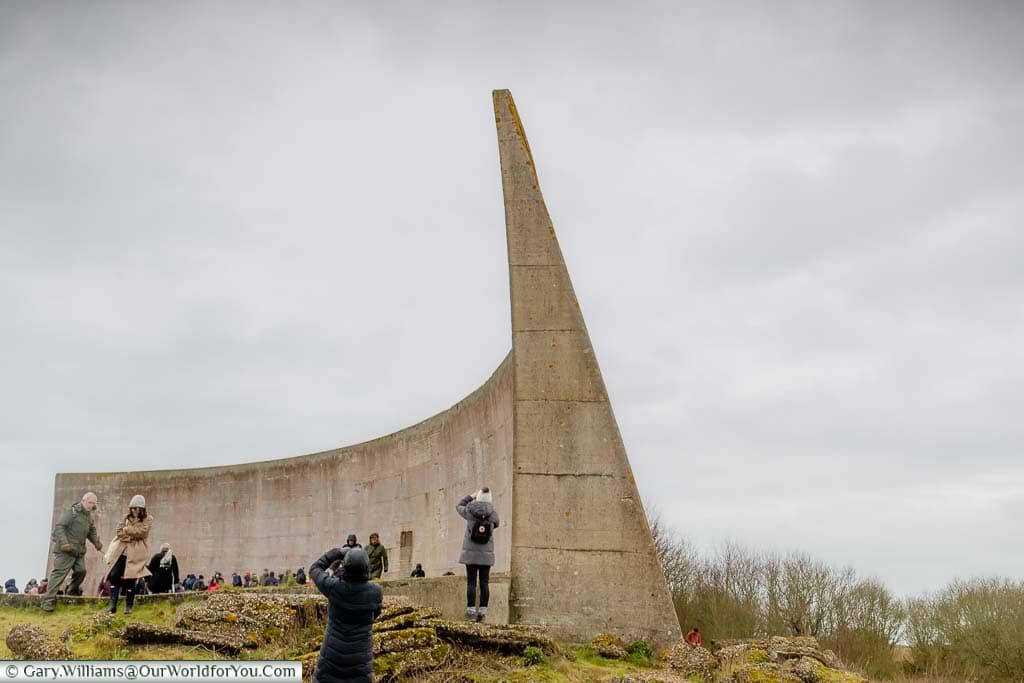
Experiments continued until 1936, and in 1937 the 200ft Sound Mirror at Greatstone was closed. This design of the acoustic mirror is believed to be only one of two in the world; the other is in Malta.
The hours and hours of experiments that were undertaken using these sound mirrors quickly became obsolete. The invention of radar in 1932 meant these extraordinary relics were left to decay and were abandoned to history.
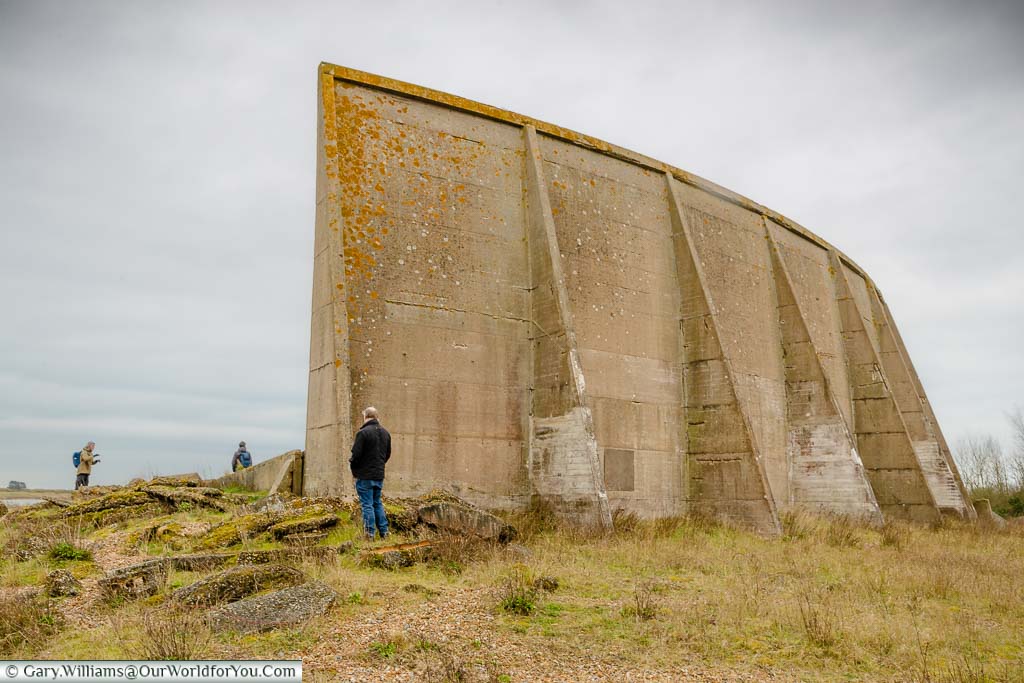
In 1939 instructions were given for the mirrors to be destroyed, but luckily for us, they weren’t, and we now have the pleasure of visiting them and remembering a moment in time.
A local expert on the sound mirrors and publisher of the ‘Echoes from the Sky’ book hosted talks on this extraordinary site by the 200ft curved wall; it was fascinating.
Map, guides and more
If you fancy discovering the surrounding footpaths and bridleways around Romney Marsh, head to the Ordnance Survey website. The local OS Map covering the region is no. 125, ‘Romney Marsh, Rye & Winchelsea’.
Alternatively, why not purchase and download the OS Maps App, which covers all of Great Britain.
Arriving at the Sound Mirrors
Useful informationDue to the location of the Denge Sound Mirrors on the Kent coast, I would suspect that most of you will arrive by car. The sound mirrors are situated on a remote island; therefore, the nearest car park is 1.1 miles away.
Although you are encouraged to use the local car parks, the spaces are limited, and there is street side parking along Leonard Road, the approach to the sound mirrors.
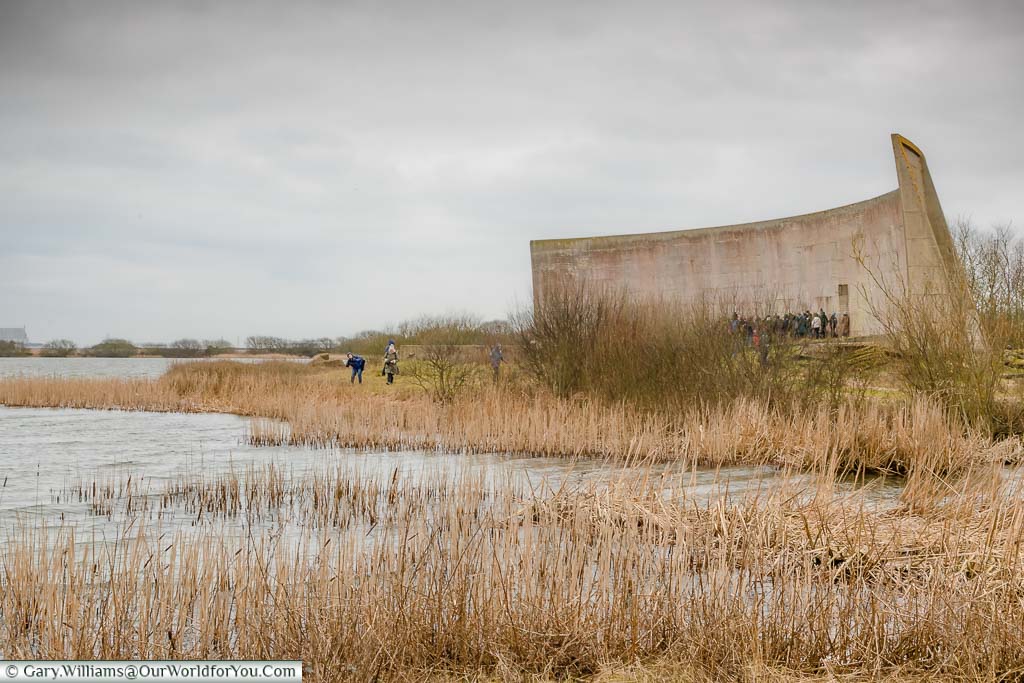
A fun way to arrive would be on the miniature Romney, Hythe and Dymchurch Railway. You can catch it from Hythe further north along the coast and jump off at ‘Romney Sands Station. It’s then just a 10-minute walk to the mirrors.
Additionally, be aware that the event may be unsuitable for disabled access. There is quite a bit of loose shingle to walk upon, and there is a very narrow bridge to cross onto the island. This, in my opinion, is unsuitable for wheelchairs, electric scooters, and pushchairs.
If you're intrigued by Kent's weird and wonderful history, or all unusual stories around the county, then take a peek at "Kent's Strangest Tales".
You won't be able to put it down, you can pick it up for your Kindle or in good old paperback.
Exploring the surreal landscape of Dungeness
Venturing on a Romney Marsh road tripNearby the ‘Listening Mirrors’ is the untamed and surreal landscape of Dungeness. Dungeness is located within a private estate on a shingle headland; however, you are free to visit as you wish.
It is a fascinating place to explore and there are so many quirky features to discover. With its numerous lighthouses, a Nuclear Power Station which is still operation, and the end-of-the-line station for the heritage Romney, Hythe, and Dymchurch Railway.
Though my favourite aspect of Dungeness is the captivating shingle coastline. All along the shore are boats in various states of wear and tear, from the working trawlers to the abandoned and rusting fishing machinery.
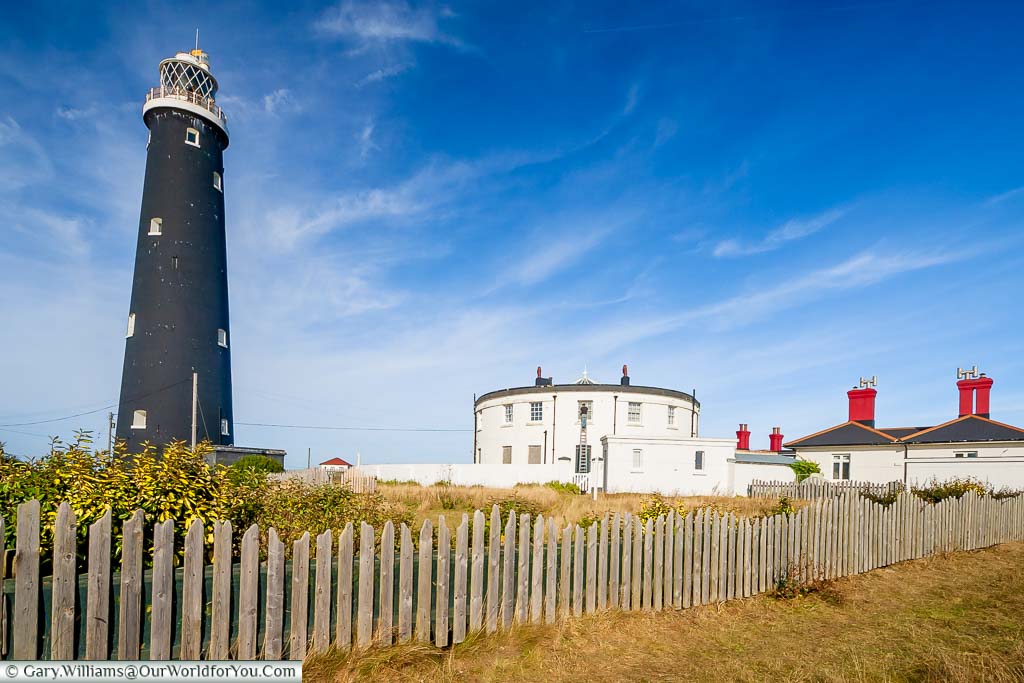
If you love this region of Kent as much as we do, then I’m sure you’ll enjoy the Romney Marsh road trip itinerary that we have put together.
The 45-mile circular journey starts from Hythe a little further north around the coast. We then venture through Dymchurch, New Romney, Dungeness, Lydd, Old Romney, Appledore and pass by many historical churches dotted around the remote marshlands.
Travelling through delightful villages and even the Port Lympne Reserve prior to meandering back to Hythe.
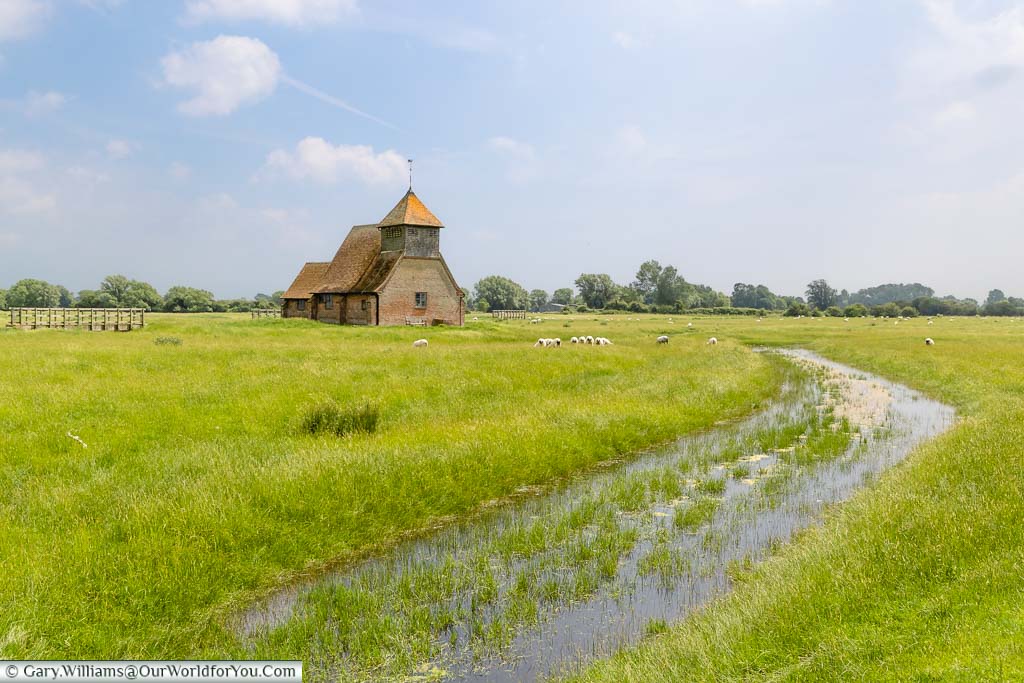
Our video of the Sound Mirrors
We have created a little YouTube video of our visit to the Sound Mirrors at Denge. Why not take a look?
Also, why not subscribe to our YouTube channel and get the latest clips as we post them?
Our other Kent road trips
If you’ve fallen in love with the county of Kent, we’ve created a few road trips around the “Garden of England” that we believe you will enjoy.
If you don't have access to a car, then why not check out Rental Cars? They will search well-known car hire brands and discover the deals that suit you the best.
* This post may contain links to affiliated sites where we earn a small commission at no additional charge to you.


